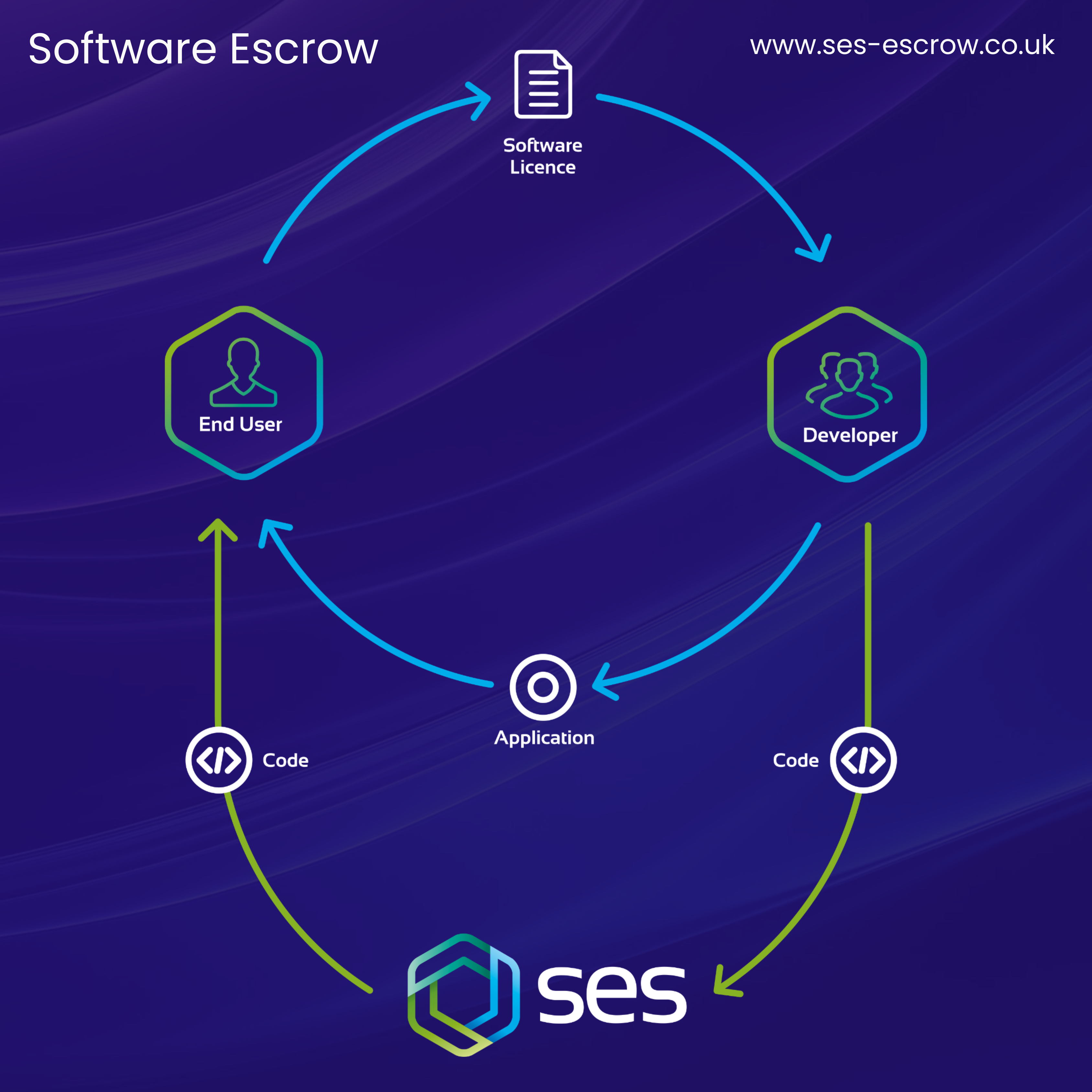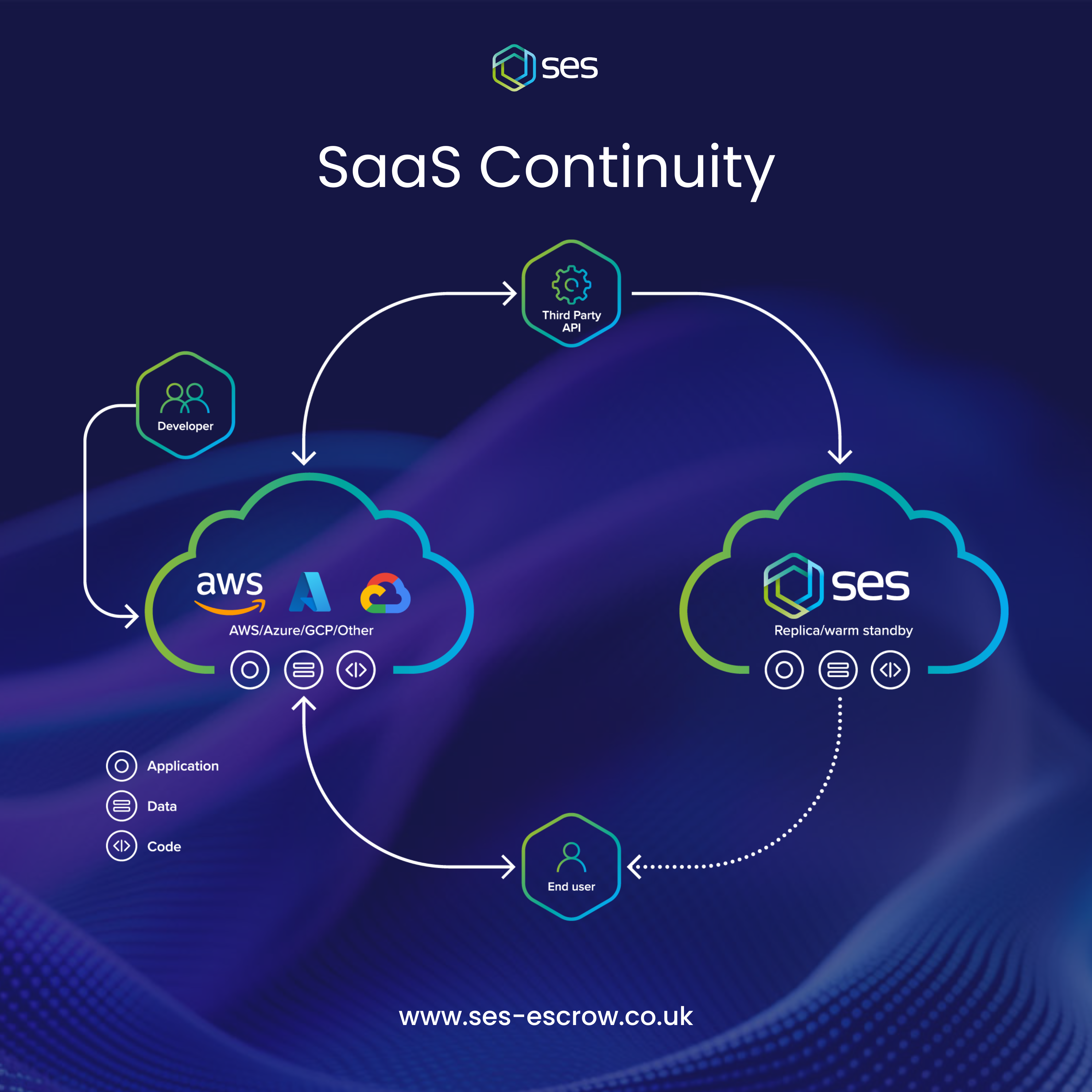The term "Escrow" is used across various industries in different contexts. In the realm of software applications, it specifically refers to ‘Software Escrow’, also known as ‘Source Code Escrow’.
Escrow for software involves a Software Escrow Solution being put in place. This is a tri-party legal agreement between the following parties:
- A software application’s end-user (e.g. a business).
- A software vendor (i.e. the developer/provider of the software application).
- A trusted Software Escrow agent (such as SES Secure).

Software Escrow was introduced in the 1980s as a response to the increasing risks associated with relying on third-party software vendors. However, it’s crucial to consider that its purpose isn't to cast doubt on the reliability or competence of such vendors. Instead, Software Escrow serves as a proactive strategy to enhance risk management, transparency, and trust among all parties involved.
For an insight on the role of Software Escrow from the perspective of a software developer, check out our blog, ‘The Role of Software Escrow: A Developer’s Perspective’.
Within a Source Code Escrow agreement, when certain release conditions are met, the solution is activated. Examples of Source Code release conditions include:
- A vendor entering bankruptcy.
- A vendor failing to maintain adequate service levels.
- A vendor breaches the terms of an agreement.
How Does the Source Code Escrow Process Work?
After the terms of a Software Escrow Solution, including details on established release conditions, have been agreed upon by all parties involved, source code and other relevant materials are deposited to the Escrow agent.
At SES, all deposited source code and related materials undergo testing by our in-house team of technology specialists to ensure they are accurate, current, and ready for redeployment if needed. Once verified, these materials are securely stored.
Should the agreed-upon release conditions be met, SES facilitates the release of the materials to the end-user, enabling uninterrupted access, control, and operation of critical software applications.
To put this simply, when an end-user is unable to access or operate a critical application, major disruption can be caused to their daily operations. Now, if the materials associated with this critical application are held in Escrow, then the Escrow Solution can be activated in response to the disruption. This supports the business with maintaining the continuity of their business operations.
Additionally, throughout a Source Code Escrow Agreement, maintenance and update protocols are strictly adhered to. This ensures that any materials released during a release event are completely up-to-date and reliable.
Risk Mitigation Within SaaS-Driven Environments
Traditional Source Code Escrow, often called ‘On-Premise Escrow,’ was originally developed to safeguard mission-critical applications installed directly within a company’s infrastructure. However, with the rapid rise of SaaS, the Software Escrow model has undergone a significant transformation. ‘SaaS Escrow’, also referred to as ‘Cloud Escrow’ refers to a Software Escrow service that’s tailored to safeguarding of cloud-hosted applications.

At SES, we’ve developed an industry first solution. ‘SaaS Continuity’ has been carefully crafted to achieve the immediate recovery of a SaaS system following a disruption/disaster. Within a SaaS Continuity Solution, the expert team at SES Secure takes on the full responsibility for system recovery. To learn more, check out our blog, ‘SaaS Continuity – Disaster Recovery for Cloud-Hosted Applications’.

If you have any questions or would like to directly speak with a member of our team, please get in touch.